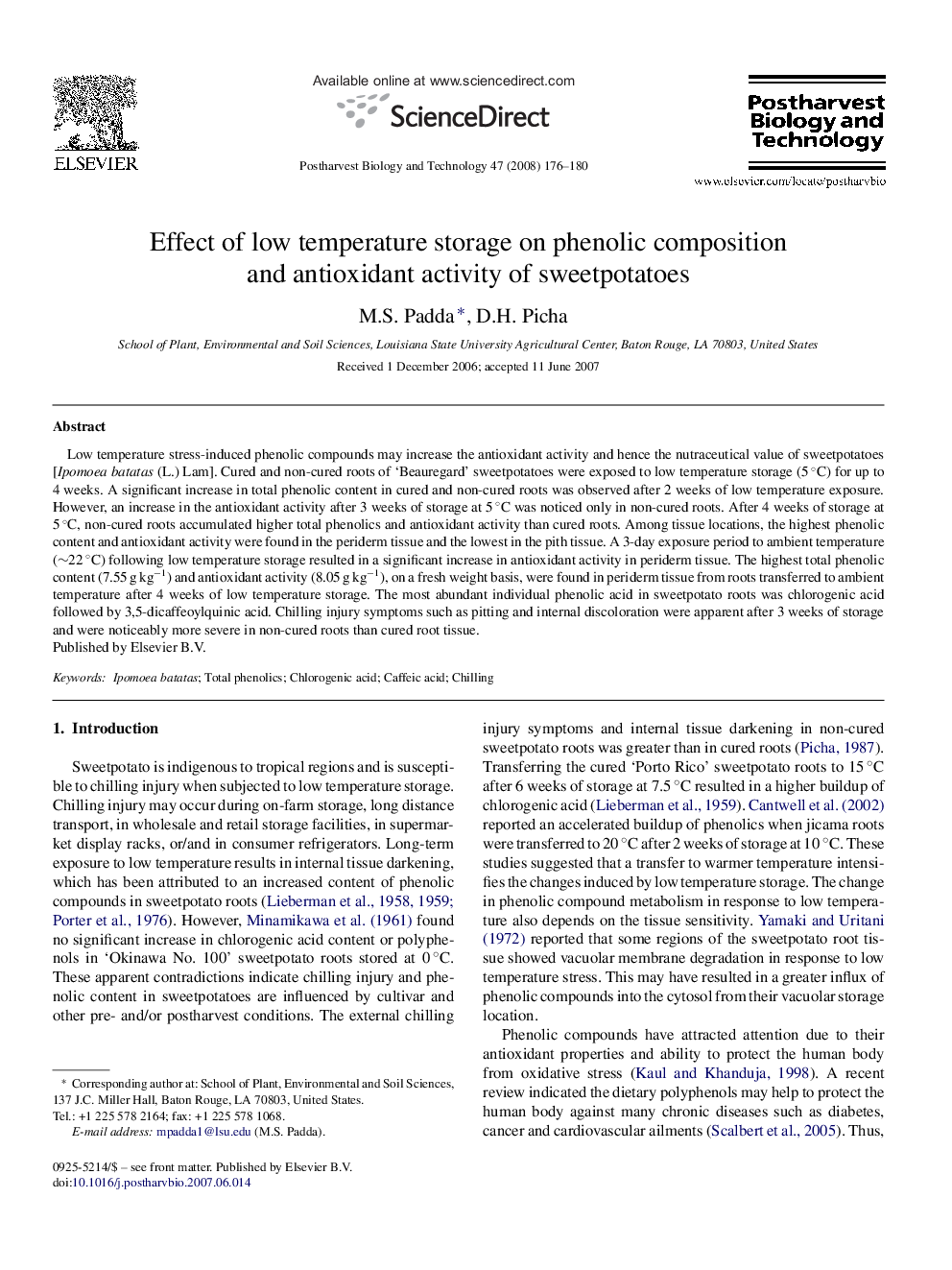| Article ID | Journal | Published Year | Pages | File Type |
|---|---|---|---|---|
| 4519463 | Postharvest Biology and Technology | 2008 | 5 Pages |
Low temperature stress-induced phenolic compounds may increase the antioxidant activity and hence the nutraceutical value of sweetpotatoes [Ipomoea batatas (L.) Lam]. Cured and non-cured roots of ‘Beauregard’ sweetpotatoes were exposed to low temperature storage (5 °C) for up to 4 weeks. A significant increase in total phenolic content in cured and non-cured roots was observed after 2 weeks of low temperature exposure. However, an increase in the antioxidant activity after 3 weeks of storage at 5 °C was noticed only in non-cured roots. After 4 weeks of storage at 5 °C, non-cured roots accumulated higher total phenolics and antioxidant activity than cured roots. Among tissue locations, the highest phenolic content and antioxidant activity were found in the periderm tissue and the lowest in the pith tissue. A 3-day exposure period to ambient temperature (∼22 °C) following low temperature storage resulted in a significant increase in antioxidant activity in periderm tissue. The highest total phenolic content (7.55 g kg−1) and antioxidant activity (8.05 g kg−1), on a fresh weight basis, were found in periderm tissue from roots transferred to ambient temperature after 4 weeks of low temperature storage. The most abundant individual phenolic acid in sweetpotato roots was chlorogenic acid followed by 3,5-dicaffeoylquinic acid. Chilling injury symptoms such as pitting and internal discoloration were apparent after 3 weeks of storage and were noticeably more severe in non-cured roots than cured root tissue.
